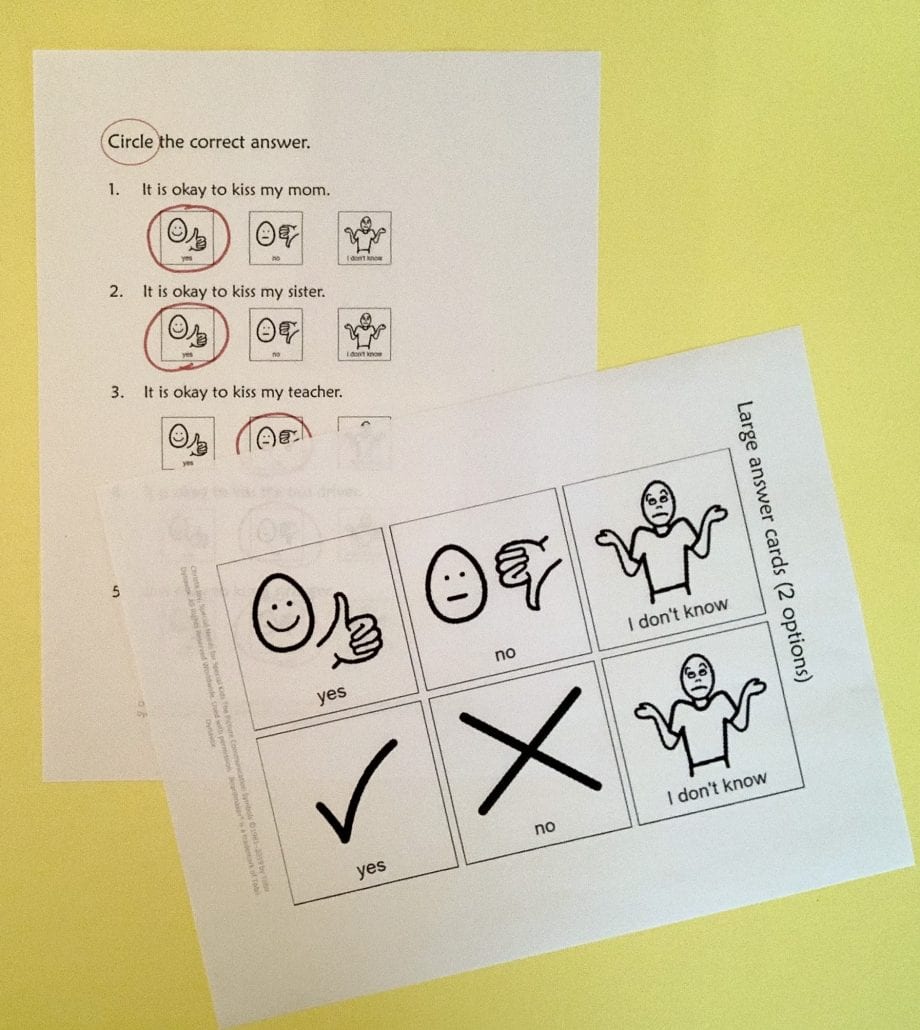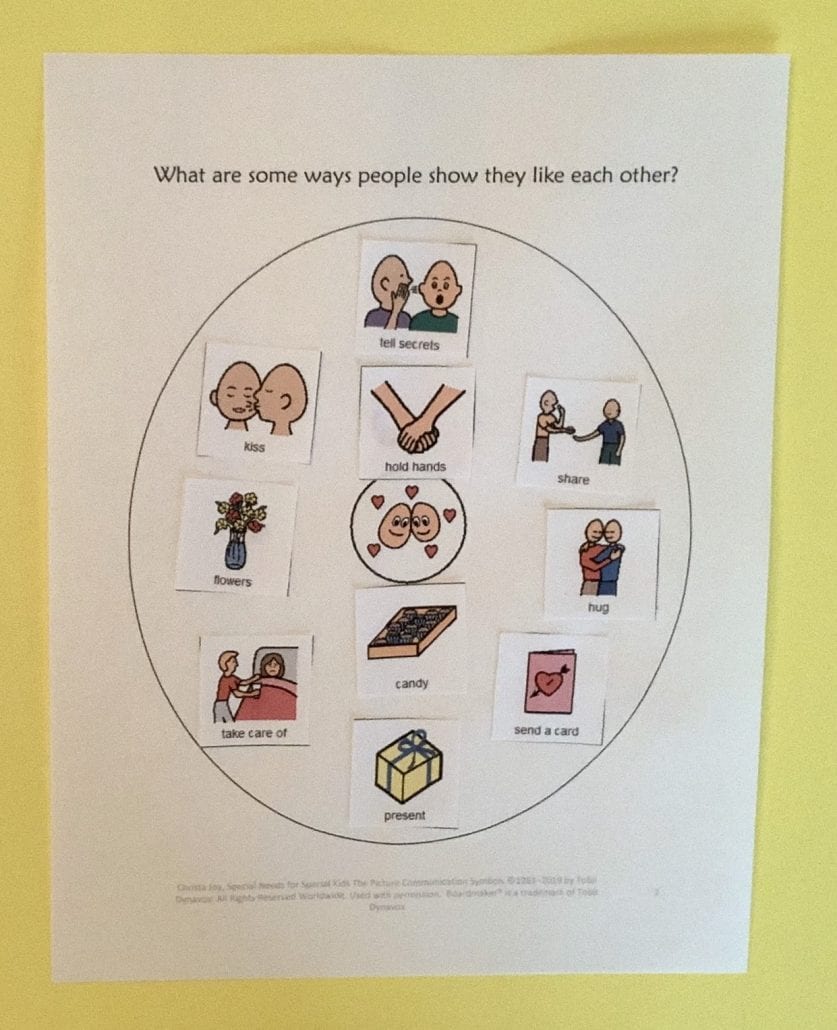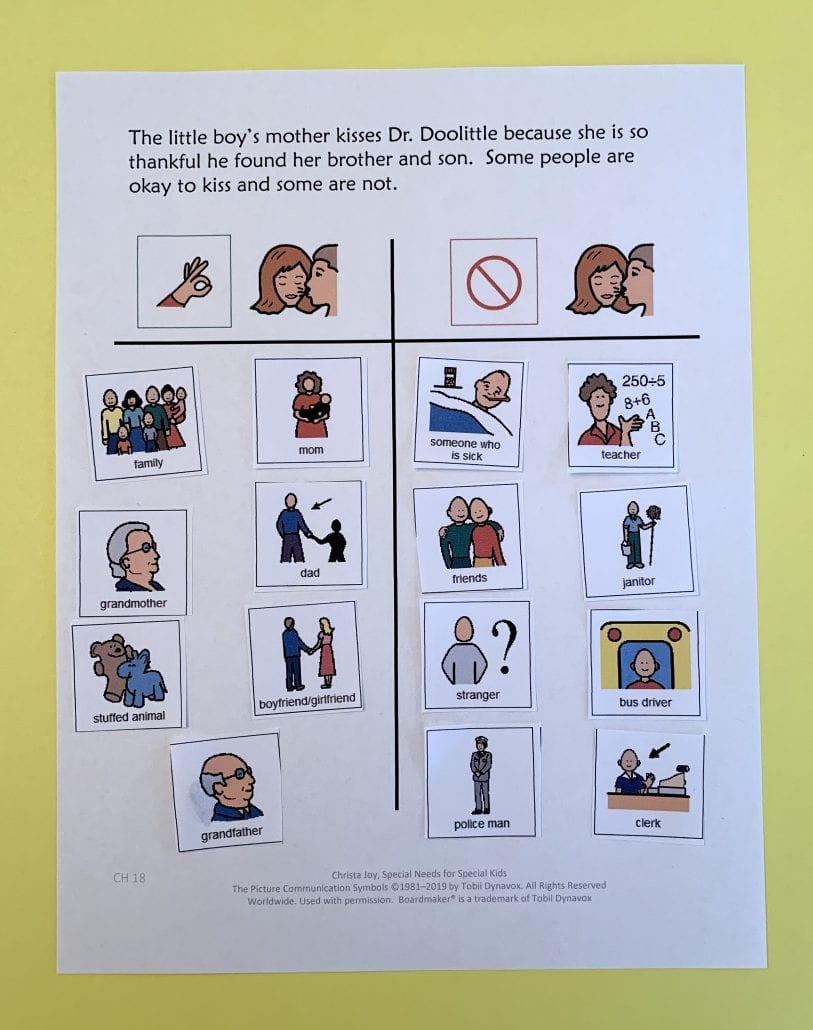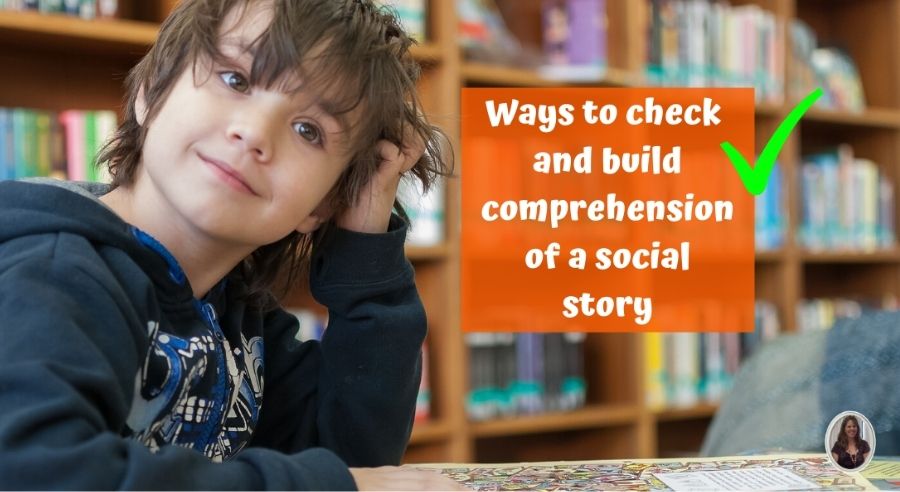So, you put in all the upfront work when it comes to writing your own social story. You nailed the function of the behavior. (To read more about this MOST important step click HERE.) You have an opening that is engaging. You even picked out some photos you know will capture and keep your students’ attention. But what happens if your students cannot understand the story you just wrote? Was all that work a total waste of time? Or, are there ways we can actually build our students’ comprehension skills?
Of course, you are going to want to review the story for a few days before jumping into these suggestions. But after a few days, you really want to know if your students are getting the main idea of your story. Otherwise, it becomes a totally useless tool for behavioral intervention.
☑️Let’s look at three main ways we can actually check to see if our students understand the social story we just wrote. And, if it is obvious that they do not understand it what can we do?
1. Mental checklist of questions
One of the easiest ways to check for comprehension is to come up with some simple questions you can quickly ask regarding the story. For example:
- Where does this story take place?
- What is this story about?
- Who are some characters in the story?
- Tell me something good that happens.
I keep these as simple as I can, but still specific enough that, when answered, I feel fairly certain the student understands the main points of the story. You can even turn this into a short yes/no quiz.

2. Modeling appropriate behavior
Another great way to check for comprehension is to ask students to act out parts of the social story. I would recommend doing this, at least initially, in the actual setting of the story. So, if your story is about lining up in the cafeteria, then go to the cafeteria when no one else is there and practice how to line up (according in the story).
You can also describe the emotions the student may be feeling right before you want him/her to use the new replacement behavior. For example, if the student will often throw his paper and supplies when he gets frustrated when the work is too hard, you can ask the student, “Can you show me what would you do if you start to feel angry or upset because your work is too hard?”
This is a great opportunity for you to test out the replacement behavior you have chosen to focus on in the social story. Is it easy for the student to do? Do they understand how to physically perform it?
3. Creating some related activities
This last way is not only great for checking for comprehension, but it also will help you build better understanding if you students are confused.
➡️Circle maps

Circle maps are a great way for students to see a good amount of content in one visual representation. I love circle maps. They are so simple to put together, and students love to create them. In addition, students can come back to quickly review the main points of a lesson.
There are 2 ways you can approach using a circle map. The first is to simply provide students with only correct answers to place in the map, thus creating an accurate representation and review tool of the material. This will really help to deepen understanding and build more comprehension. They second is to mix in some wrong answers. With this method, students have to decide if the picture choice should go in the circle map or not. With this method, you are able to better check for comprehension. Can the students sort out right versus wrong answers?
➡️Sorting activities

Creating a simple sorting activity using some of the content from the story is a great way to check for comprehension. At the same time, it has students look at the material in a different way which will help to deepen their understanding and build comprehension. Remember, you can always add color coding for additional support for students who need it. Then, fade that support away to check for understanding. You can read more about color coding HERE.
We all intuitively know how important comprehension is, but you would be surprised how easy it is to either skip this step or ignore it all together. Make sure that all the time you invested in writing a great social story was worth it by taking some time to check in with your students. Do they understand the story? Do they understand what you want them to stop doing? Do they understand what you want them to start doing?

